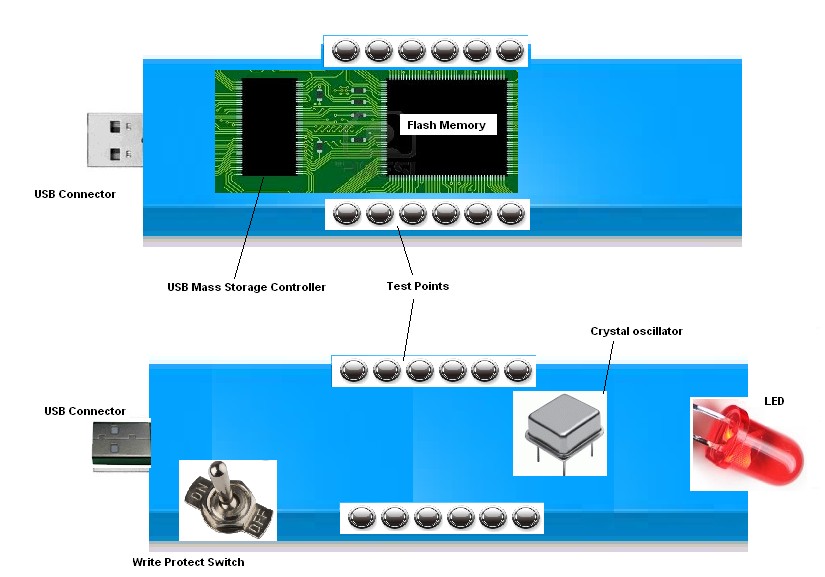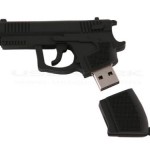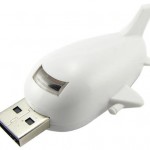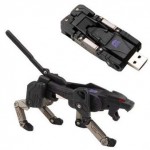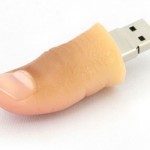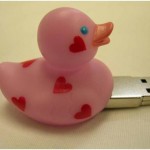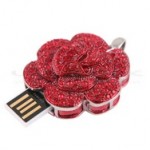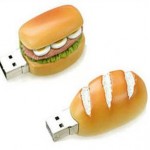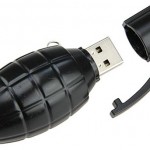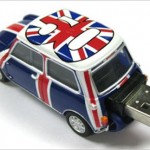I have been using 2GB USB drive for quite some time and never wondered whats inside it until yesterday. I happened to drop it on the ground from my office in 5th floor. When i reached ground floor, found it to be wide open. It is no longer repairable but I was hoping data could be recovered if flash memory will be transferred to another good flash drive. The USB Flash device I have opened had 2 chips. One the controller which connect directly to the USB connector, and the others standard flash device. It has very few components and compost mainly of resistors and capacitors. A green LED is provided to indicate controller’s activity. It has also got a write protect on/off switch.
If you happened to own a computer a decade ago, they used to come with an array of connectors. There were serial ports, parallel ports, infra-red ports, audio/speaker connections, and many other ports. These ports were mainly used to connect printers, web cameras, head phones, scanners etc. And the worst part is that they are not plug and play. You need to install drivers to work with them. More over connectors were not compatible with products of different companies.
With the advent of USB, Now most of the products are having USB as connector and the popular one is USB Flash drive. Computers access modern flash memory systems very much like hard disk drives, where the controller system has full control over where information is actually stored. USB flash drives are often used for the same purposes for which floppy disks or CD-ROMs were used. They are smaller, faster, have thousands of times more capacity, and are more durable and reliable because of their lack of moving parts. Until approximately 2005, most desktop and laptop computers were supplied with floppy disk drives, but floppy disk drives has been abandoned in favor of USB ports.
The first ever Flash memory i owned is 128KB drive which i purchased for US $45(Rs2000) back in 2002. And today i purchased 64GB pen drive for rupees 7000. Prices have come down a lot with in last few years. My latest pen drive weighs less than 30 grams. File transfer speeds vary considerably and should be checked before purchase. Speeds may be given in Mbyte per second, Mbit per second or optical drive multipliers such as “180X” (180 times 150 KiB per second). Typical fast drives claim to read at up to 30 megabytes/s (MB/s) and write at about half that speed. This is about 20 times faster than older “USB full speed” devices which are limited to a maximum speed of 12 Mbit/s (1.5 MB/s).
There are lots of attractive looking pen drives in the market. Choose the one that suits your image. A lot can be told about a person by seeing what kind of gadgets he/she uses. But you have to take a few precautions while using and USB drive. There are lots a fake products, they may claim to be 64GB, but when you write it, you wont be able to write more than 32GB or 16GB. So buy a good branded one, rather than a cheap imitation version.
Many pen drives come without write protection switch. I suggest you buy one having it. Write-protection makes a device suitable for repairing virus-contaminated host computers without risk of infecting the USB flash drive itself.
If you are connecting on the back side of computer, USB connectors are hard wired into the mother board. So be careful when you connect them, if you push and pull too hard, you may break the connector. So be gentle when you use a pen drive.

